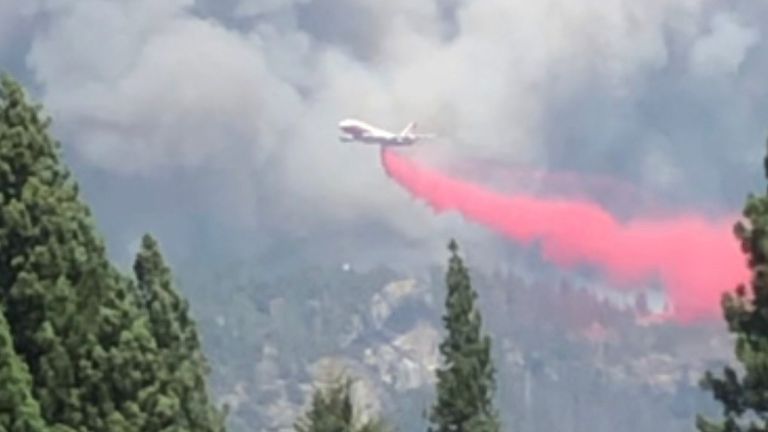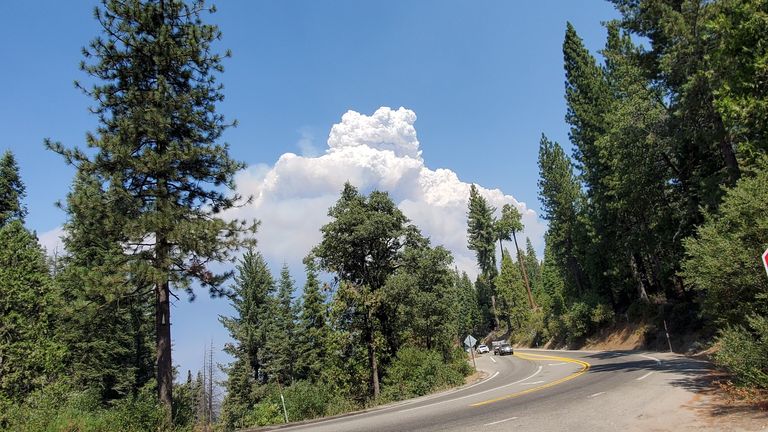Hundreds of firefighters are battling a huge brush fire at California’s Sierra National Forest, which has left dozens of people injured – including two who are in a critical condition.
Cal Fire, the state’s department of forestry and fire protection, said in a tweet that the still-uncontained blaze had ravaged more than 36,000 acres since it started near Shaver’s Lake, north of Los Angeles, on Friday evening.
A spokesman for the Sierra National Forest, which encompasses more than 1.3 million acres, said the fire was located near the San Joaquin River – close to Mammoth Pool camping ground – and the communities of Big Creek and Huntington Lake, adding that the cause remains under investigation.
Dozens of people were left trapped after the fire expanded to 56 square miles, compromising the only road into Mammoth Pool.
Photographs on social media show huge plumes of smoke billowing in the air.
An evacuation order was issued for nearby Huntington Lake, with the Fresno County Sheriff’s Office saying this was in addition to existing orders for Camp Sierra and Big Creek.
It said Shaver Lake was closed to the public, and urged those hoping to visit the area over the Labor Day holiday weekend to “leave now to avoid traffic jams on Highway 168”.
Authorities have said 450 firefighters are involved in efforts to tackle the blaze, using 20 engines, three helicopters and three air tankers.
Fresno Fire Department said that so far, 63 people have been rescued by military helicopters and taken to Fresno Yosemite International Airport after being trapped by the fire.
It said that two patients have been “severely injured”, adding that 10 had been “moderately” hurt, and 51 others had minor or no injuries.
Planes will return to continue with rescue efforts, but it was not known how many more victims there could be, and the Red Cross said volunteers had set up temporary evacuation points at a local school for families affected.
California has again been ravaged by wildfires this summer, including the formation of a rare fire tornado near the Nevada border – and the peak of the fire season usually doesn’t arrive until September or October.


